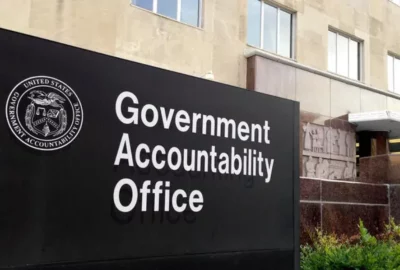Hubbard Radio Washington DC, LLC. All rights reserved. This website is not intended for users located within the European Economic Area.
Biden Administration tweaks regulations for how states, cities can use federal funding
A recent update by the Office of Management and Budget aims to give state, local, and tribal governments more autonomy on how they spend federal grant money.
A recent update by the Office of Management and Budget (OMB) to the Uniform Grants Guidance, aims to give state, local, and tribal governments more autonomy on how they spend federal grant money. The update engenders more importance, with substantial amounts of money coming in from the Inflation Reduction Act. For one view of how this could all play out, Federal News Network’s Eric White spoke on the Federal Drive with Tom Temin with the assistant director for policy at the union-oriented Jobs to Move America, Valerie Lizarraga.
Interview Transcript:
Valerie Lizarraga These are federal guidelines that determine how recipients so states, localities, how they could spend federal money, and how they award federally funded contracts to private companies. So it has huge impacts in terms of how the federal dollars are spent.
Eric White All right. And so what were the changes that you all were hoping for? And did you get all of them? And I guess we can also get into the changes that were made, actually.
Valerie Lizarraga Yeah, we had I would say most of our recommendations included in the guidance, where we are really excited that the updated version of the uniform guidance provides much needed clarity, to recipients of federal funds, that it not only gives them clarity, but it also provides them the flexibility to incorporate policy tools that really allows them to maximize the benefit of federal investments. So now they really have a clear green light to incorporate different policy tools that we know work, but also innovate in their procurement processes. So just to share a few specific examples of what’s included in this updated version of the guidance is now recipients can advance family sustaining and local jobs in their communities so they could incorporate high road procurement standards into their procurement processes. Whereas before it was very unclear if recipients had the ability to do that, which resulted in most projects with federal funds not having any substantive standards attached to them.
Eric White And yes, was there confusion for, I don’t know if it was directly affecting you all, but it was probably affecting those that you work with. And when they have this federal grant money, they’re like we’d like to be able to spend it in the ways that we know will help the most, but we don’t know if we’re allowed to do that. Was that the the draw back from before?
Valerie Lizarraga Yeah, I think that was one major drawback. There was also like one major update in the guidance. There was a ban on geographic preference. And so what that means is previously recipients. So again localities and cities were not able to promote good local jobs for federally funded projects happening in their own communities. And so now with this update, the geographic preference ban is lifted, meaning that local governments can incorporate policies like local hire that provide access to local jobs for residents. And they can also incorporate procurement practices that uplift small local businesses. Which we know is really important in terms of advancing equity at the local level.
Eric White We’re speaking with Valerie Lizarraga. She is the national program assistant director for Jobs to Move America. And so why wasn’t this there before? What was the the reasoning that OMB had these rules in place? Were they thinking, we know better or was it just kind of an oversight?
Valerie Lizarraga Yeah, I wouldn’t say that it was necessarily an oversight. The previous version of the guidelines was substantially updated over a couple of decades ago. And the previous updates, like, really resulted in local and state governments being extremely limited in their ability to implement, like effective and efficient procurement standards for programs and projects that had federal dollars attached. And so after those previous updates happened, the result was that, again, most projects went forward without any substantive standards attached to them for the same reason that recipients were afraid that their projects were going to be blocked and seen as not abiding by these federal grant guidelines. And so there were a few examples where localities or cities tried to incorporate substantive standards that made sense that aligned with the mission and values of their program and project. And they were blocked. So I could give a specific example. I believe it was in 1997, there was a San Francisco law where they wanted to require contractors to provide domestic partner benefits, and that was blocked by the Department of Transportation because it was seen to not fit into the previous iteration of the grant guidelines. And so they really like it had huge, huge impacts in terms, again, of how federal dollars were being implemented. So we’re really excited to see these changes and that local and state governments will have the flexibility that they need to implement federal dollars and in the most effective and impactful way possible for their communities and for workers.
Eric White The legislation it supports calls for it. And the White House has definitely made an honest to make sure that some federal there are more federal grant money is diversified as DEIA has become the term of the day. Do you feel like this is a new day? And this is a big turning point where as some money will start going to communities that weren’t left out on purpose or anything. It was just that it was not part of the initiative itself when that money did come into the state and local municipality.
Valerie Lizarraga We really, I think one thing to be clear is that a lot of this language is permissive, so it’s not a requirement. I think recipients, again, local and state governments can decide, what policy tools make the most sense for their programs and their communities. But we really see this as a major opportunity that will allow federal investments to create even more concrete benefits for communities and workers, and just really look forward to seeing the impact that these updates will make in the years to come. Just to share a couple of other examples that were actually listed in the updated guidance in terms of in the theme of like clear permission that is going to be given to recipients is, one of the things that this update makes clear is that high road procurement standards that promote family sustaining, quality jobs are permitted under the uniform guidance. So, for example, recipients can incorporate a job scoring mechanism like job to move America’s U.S. employment policy framework into their bidding process. And what that does is it really creates this race to the top for contractors instead of a race to the bottom by incentivizing and rewarding employers that incorporate job quality metrics. So things like looking at family, sustaining wages, ensuring that employers are giving benefits. And again, this ties along with the theme of ensuring that our public dollars are creating the most public benefit.
Eric White What is your definition of a good sound job coming out of a federal grant program? Is it a sustainable one, or is it just one that incorporates a lot of these values that you have discussed so far?
Valerie Lizarraga Yeah, I think that’s a great question. I think a good job is a job that has a family sustaining wage that has benefits. I think it’s also a safe job ensuring that folks that are working on this different projects are not exposed to different possibly environmental harms or other possibly risks on the job. And I also think a good job offers space for for growth in terms of professional development. And so that sometimes could be an embedded in workforce development programs. And so that’s something that at Jobs to Move America we really care about and we think is really key in terms of advancing equity is employers also giving opportunities to their employees to grow and have further opportunities to advance their careers as well.
Copyright © 2024 Federal News Network. All rights reserved. This website is not intended for users located within the European Economic Area.
Eric White
Eric White is news anchor and Federal Drive producer at Federal News Network.
Follow @FEDERALNEWSCAST
Related Stories
Federal security agency struggling with new IT system for tracking contract guards
Related Stories
-
GAO reviews how the VA is training its claim processors Agency Oversight





